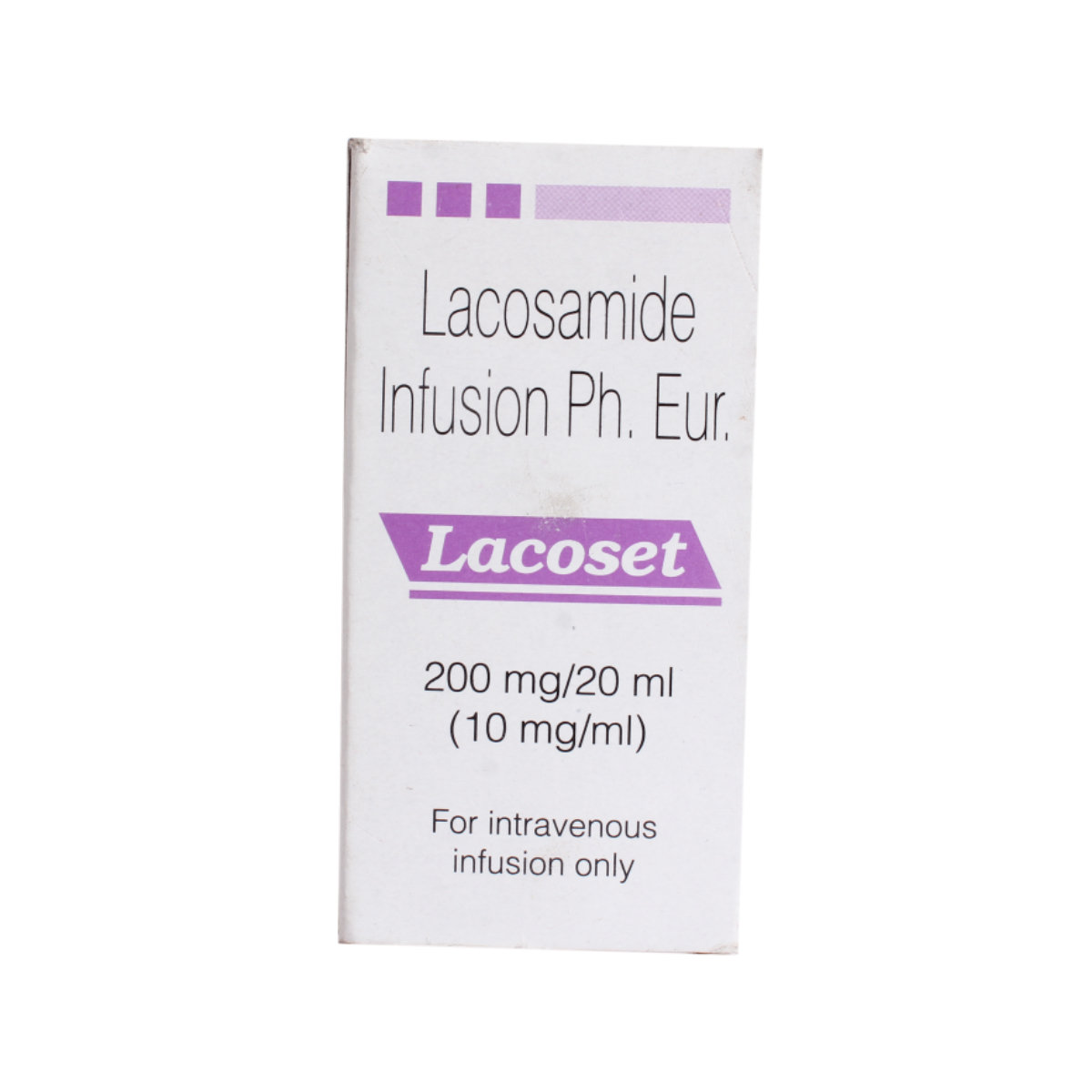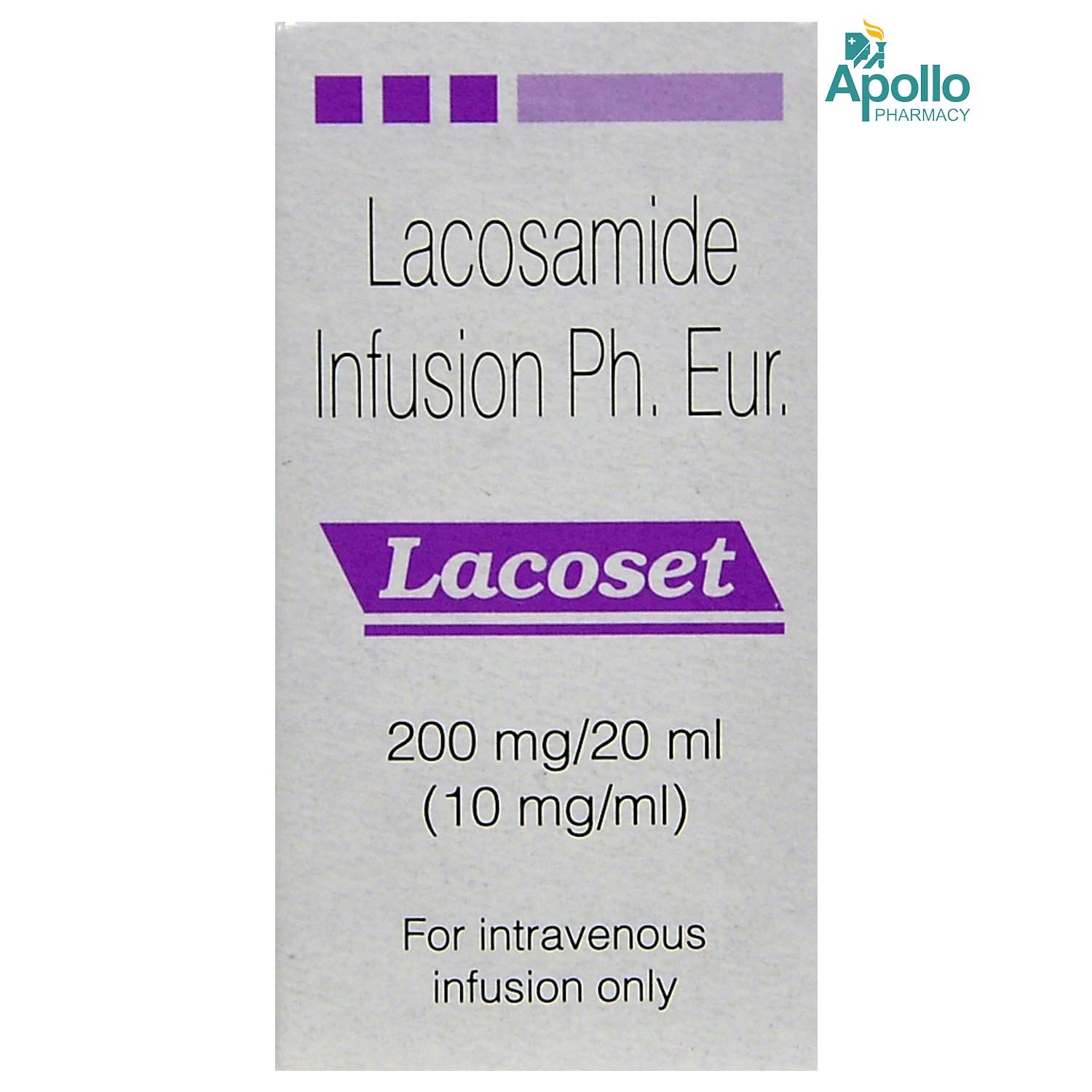Lacosam Injection

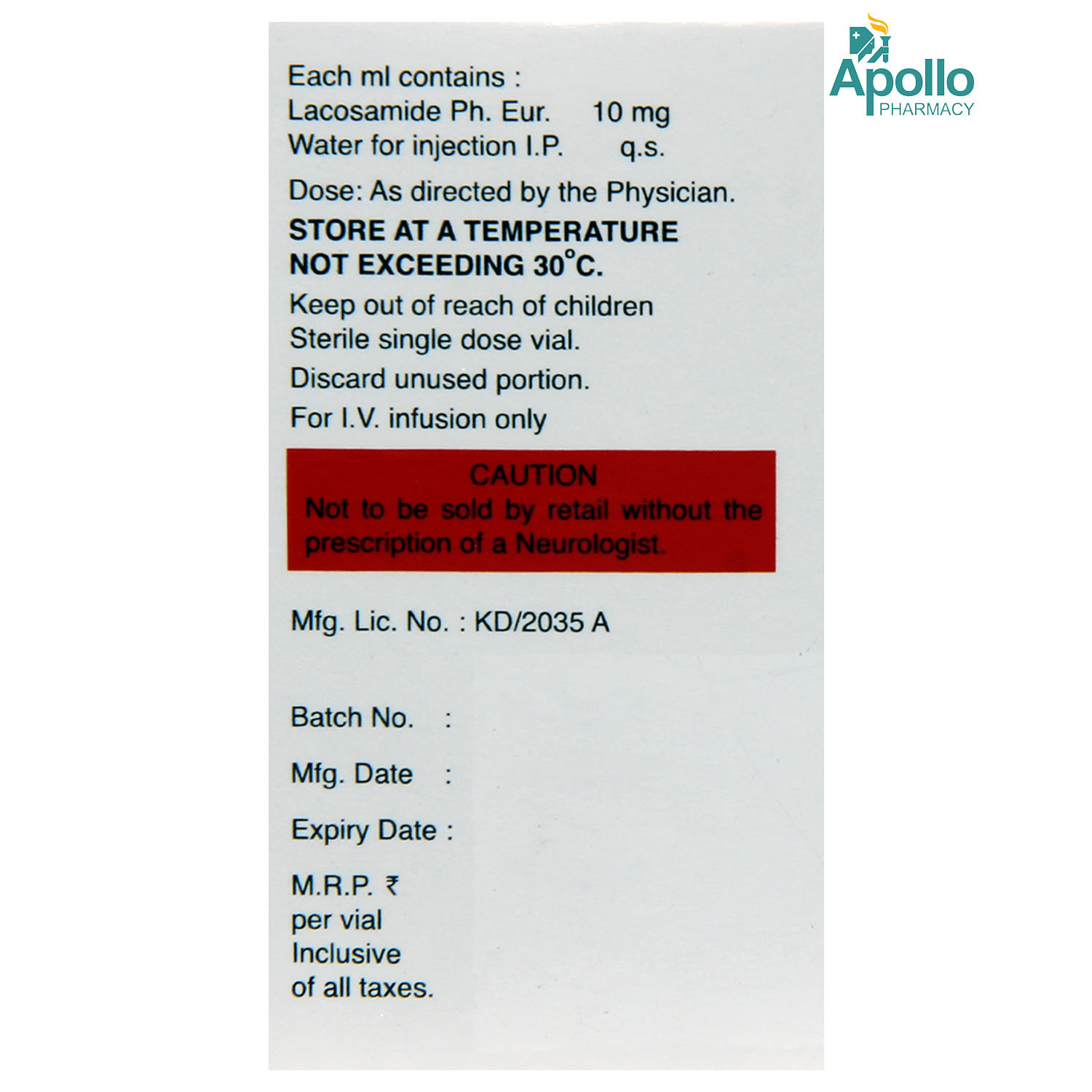
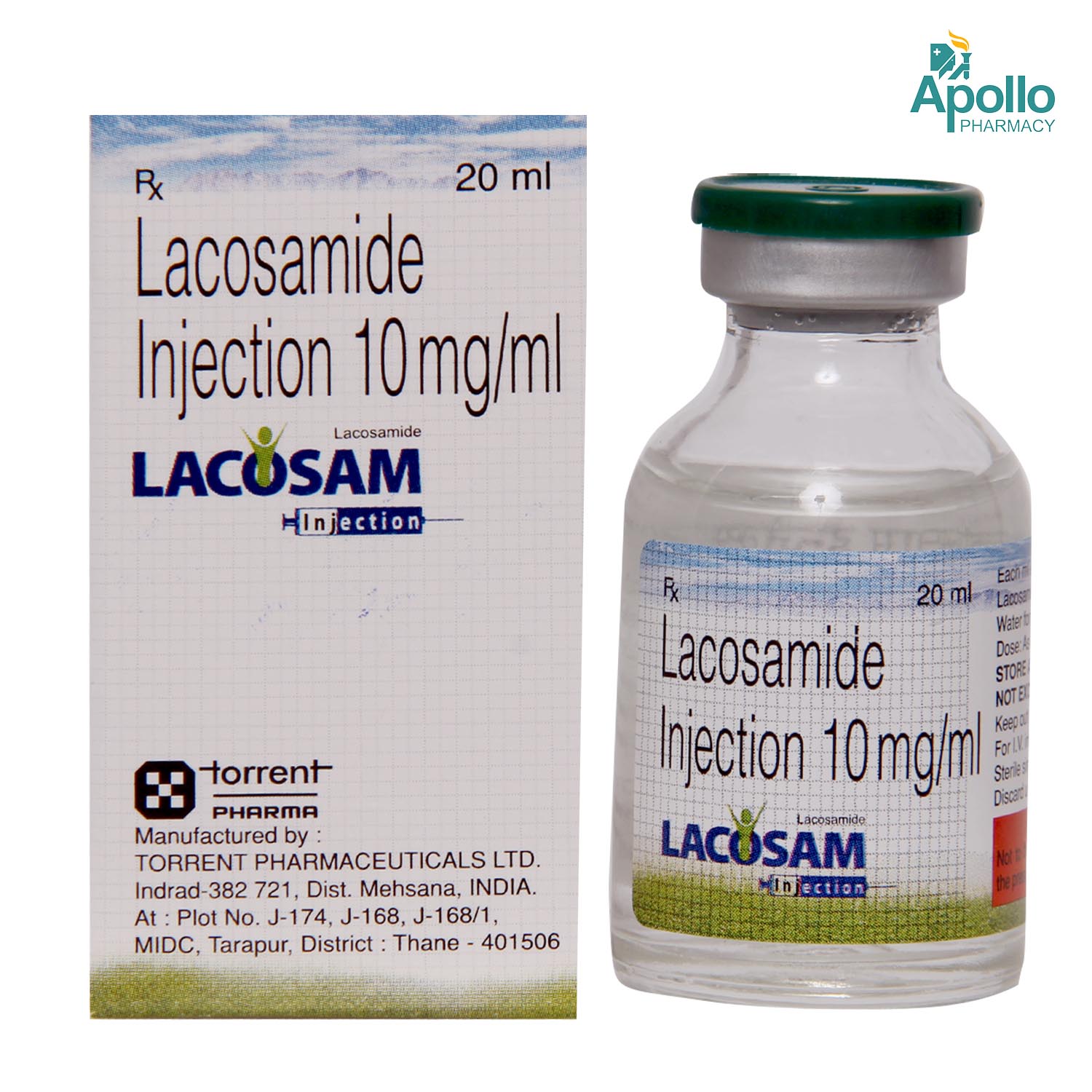
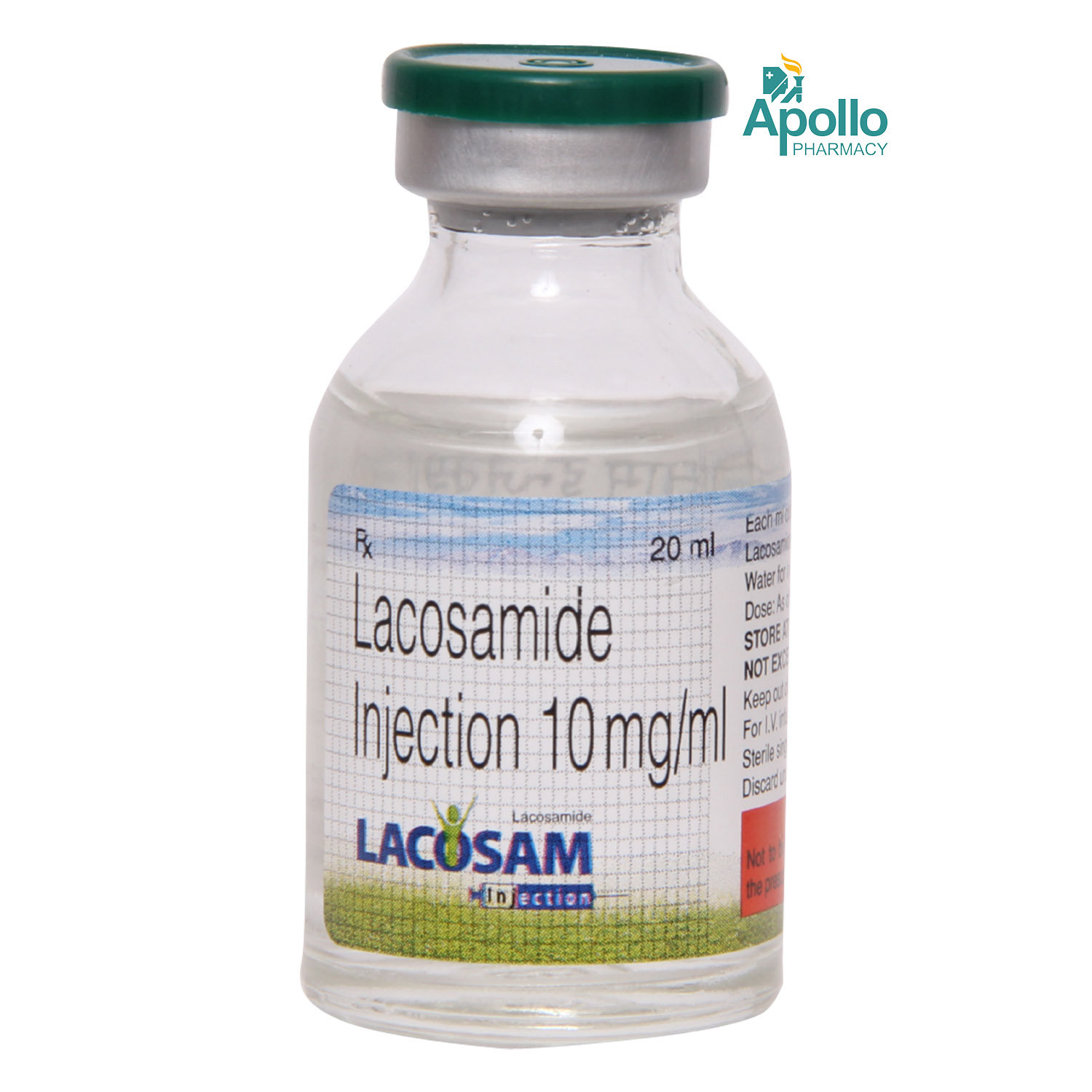
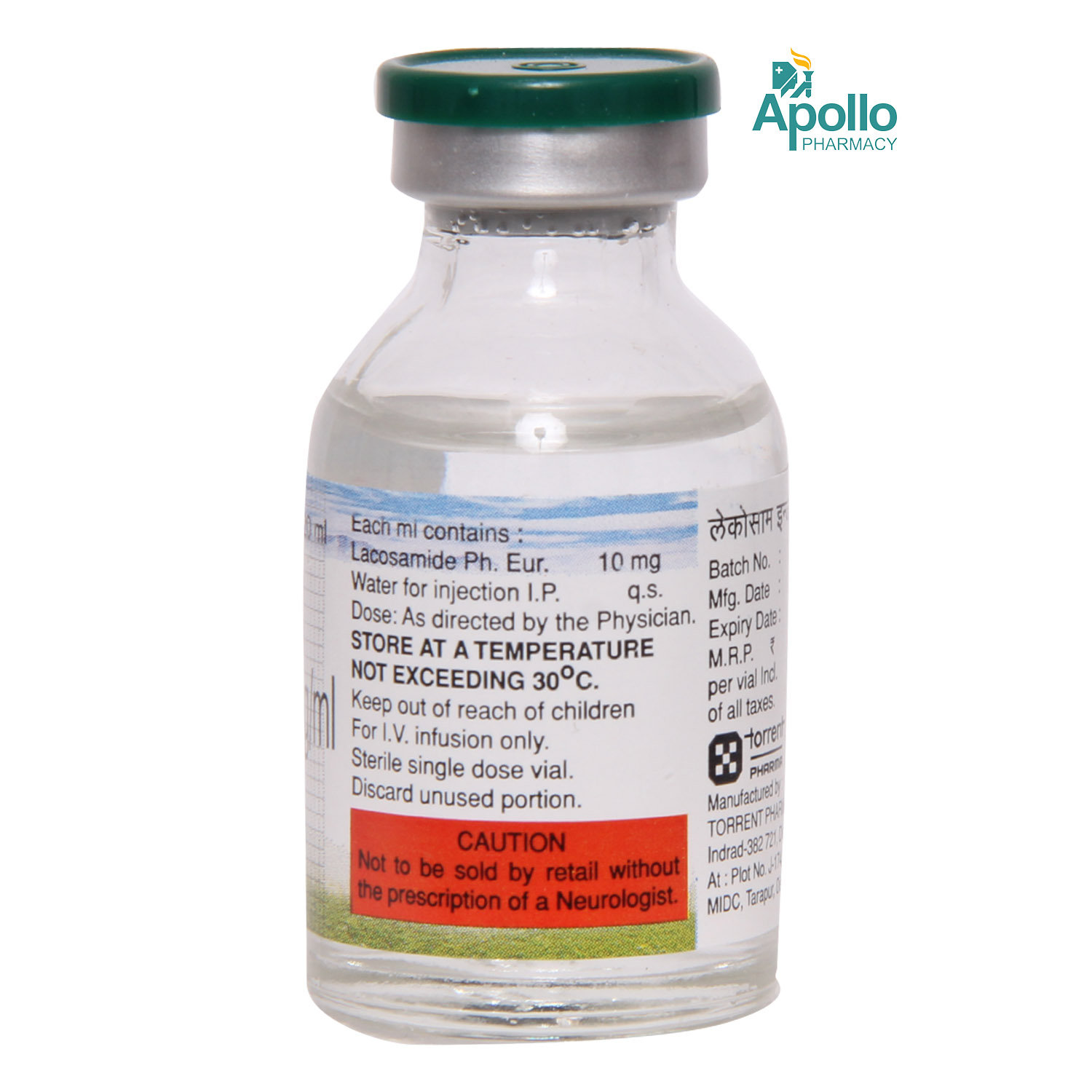
MRP ₹171
(Inclusive of all Taxes)
₹25.6 Cashback (15%)
know your delivery time
Provide Delivery Location
Composition :
Manufacturer/Marketer :
Consume Type :
Expires on or after :
Return Policy :

Secure Payment

Trusted by 8 Crore Indians

Genuine Products
Therapeutic Class
Country of origin
Manufacturer/Marketer address
Author Details
We provide you with authentic, trustworthy and relevant information
Disclaimer
Alcohol
Safe if prescribed
Consuming alcohol with Lacosam Injection is not advisable as it may cause unpleasant side effects.
Pregnancy
Consult your doctor
Lacosam Injection should not be used when pregnancy unless necessary. So, inform your doctor if you are pregnant or suspect pregnancy. Your doctor will weigh the benefits and potential risks before prescribing Lacosam Injection.
Breast Feeding
Consult your doctor
Lacosam Injection should not be used in nursing mothers unless necessary. So, inform your doctor if you are a nursing mother. Your doctor will weigh the benefits and potential risks before prescribing Lacosam Injection.
Driving
Safe if prescribed
Lacosam Injection may cause a reduction in mental awareness; thus, avoid operating machinery or driving.
Liver
Consult your doctor
Inform your doctor before receiving the Lacosam Injection if you have a liver impairment or a history of liver disease. Your doctor may adjust the dose or prescribe a suitable alternative based on your condition.
Kidney
Consult your doctor
Inform your doctor before receiving the Lacosam Injection if you have kidney impairment or a history of kidney disease. Your doctor may adjust the dose or prescribe a suitable alternative based on your condition.
Children
Safe if prescribed
Lacosam Injection can be used for children one month and older.
Product Substitutes
Reference
- https://www.epilepsy.com/tools-resources/seizure-medication-list/lacosamide
- https://www.vimpathcp.com/safety
- https://medlineplus.gov/druginfo/meds/a609029.html#:~:text=Lacosamide%20injection%20is%20used%20to,who%20cannot%20take%20oral%20medications.
- https://www.vimpathcp.com/vimpat-prescribing-information.pdf
- https://www.drugs.com/drug-interactions/lacosamide-index.html
About Lacosam Injection
Lacosam Injection belongs to the class of anticonvulsants used to treat partial onset seizures (seizures that affect only one portion of the brain) in adults and children one month or older who cannot take oral treatments. Lacosam Injection is also used in conjunction with other medications to manage primary generalized tonic-clonic seizures (previously known as a grand mal seizure, a seizure affecting the entire body) in adults and children four years of age and older who are unable to take oral medications. Focal or partial-onset seizures are characterized by abnormal electrical activity in only one brain hemisphere.
Lacosam Injection contains lacosamide, which treats seizures by decreasing disorganized electrical activity in the brain.
Lacosam Injection is administered by a healthcare professional; do not self-administer. In some cases, you may experience common side effects like coordination problems, double vision, headache, nausea, vomiting, sleepiness, and unsteady walking. Most of these side effects of Lacosam Injection do not require medical attention and gradually resolve over time. However, if the side effects are persistent, reach out to your doctor.
Don’t stop taking Lacosam Injection even if your condition is controlled, as abrupt stopping may cause the recurrence of the seizures. Before taking the Lacosam Injection, inform your doctor if you are allergic to lacosamide or other ingredients. Inform your doctor if you are previously diagnosed with depression, kidney or liver impairment, and heart conditions. Before taking Lacosam Injection, inform your doctor about your medical history and other medications you are currently taking in order to rule out any potential negative effects.
Uses of Lacosam Injection
Medicinal Benefits Mweb
Key Benefits
Lacosam Injection is an antiepileptic drug, also called anticonvulsants. It treats focal seizures in adults and children above one month of age. Seizures occur due to abnormal electrical activity in the brain. Lacosam Injection can inactivate the sodium channels across the neuron membranes. This inactivation decreases neuron signals, thereby decreasing the brain's electrical disturbance or abnormal activity. It can also be used with other medications to manage primary generalized tonic-clonic seizures (Previously known as a grand mal seizure, a seizure affecting the entire body) in adults and children above 4 years of age who cannot take oral medications.
Directions for Use
Side Effects of Lacosam Injection
- Coordination problems
- Dizziness
- Double vision
- Headache
- Nausea
- Vomiting
- Sleepiness
- Unsteady walking
Drug Warnings
Consult your doctor immediately if you experience suicidal tendencies. Lacosam Injection may cause a reduction in mental awareness; hence, do not drive, operate complex machinery, or engage in other hazardous activities. Do not take Lacosam Injection if you are allergic to any of its contents. Inform your doctor before taking Lacosam Injection if you have depression, heart problems, kidney and liver problems, have low levels of sodium in your blood, or are taking medicines that could lower the levels of sodium in the blood. Lacosam Injection should not be used when pregnancy and lactation unless necessary. So, inform your doctor if you are pregnant or suspect pregnancy or nursing mother. Your doctor will weigh the benefits and potential risks before prescribing Lacosam Injection. An ECG is recommended before and after titration to maintain steady-state maintenance in patients. To reduce the risk of increased seizure frequency, Lacosam Injection should be progressively discontinued.
Drug-Drug Interactions
Drug-Drug Interactions
Login/Sign Up
When Buprenorphine is used with Lacosam Injection 20 ml, it may lead to side effects such as respiratory difficulties, and unconsciousness.
How to manage the interaction:
Although the combination of Buprenorphine with Lacosam Injection 20 ml can result in an interaction, it can be taken if a doctor has advised it. Do not exceed the doses, frequency, or duration of usage advised by a doctor. You are advised to avoid driving or operating hazardous machinery. Do not discontinue any medications without consulting a doctor.
When Ketamine and Lacosam Injection 20 ml are combined, may increase the risk of side effects.
How to manage the interaction:
Although taking Lacosam Injection 20 ml and Ketamine together can result in an interaction, it can be taken if a doctor has prescribed it. However, if you experience any symptoms such as dizziness, drowsiness, confusion, breathing difficulty, impairment in thinking, judgment, and motor coordination, consult the doctor. Do not discontinue any medications without a doctor's advice.
When used with Lacosam Injection 20 ml, Esketamine may increase the risk of side effects.
How to manage the interaction:
Although taking Lacosam Injection 20 ml and Esketamine together can result in an interaction, it can be taken if a doctor has prescribed it. However, consult a doctor immediately if you experience symptoms such as drowsiness, confusion, difficulty concentrating, and impairment in thinking, judgment, reaction speed, and motor coordination. Do not discontinue any medications without a doctor's advice.
Taking Ceritinib together with Lacosam Injection 20 ml can slow your heart rate and increase the risk of an irregular heart rhythm.
How to manage the interaction:
Although taking Lacosam Injection 20 ml and Ceritinib together can result in an interaction, it can be taken together if prescribed by a doctor. However, consult your doctor if you experience sudden dizziness, lightheadedness, fainting, breathing difficulty. Do not discontinue any medications without consulting a doctor.
Co-administration of Lacosam Injection 20 ml with Sodium oxybate can increase side effects.
How to manage the interaction:
Although taking Lacosam Injection 20 ml and Sodium oxybate together can result in an interaction, it can be taken if a doctor has prescribed it. However, consult a doctor immediately if you experience any symptoms such as drowsiness, dizziness, lightheadedness, confusion, low blood pressure, slow or shallow breathing, and impairment in thinking, judgment, and motor coordination. Do not discontinue any medications without a doctor's advice.
Co-administration of Lacosam Injection 20 ml along with Saquinavir can raise the chance of an abnormal heart rhythm.
How to manage the interaction:
Although taking Lacosam Injection 20 ml and Saquinavir together can result in an interaction, it can be taken if a doctor has prescribed it. However, if you experience sudden lightheadedness, fainting, a slow heartbeat, or dizziness, consult a doctor. Do not discontinue any medications without a doctor's advice.
Co-administration of Lacosam Injection 20 ml and Dolasetron can increase the risk of serious irregularities in heart rhythm.
How to manage the interaction:
Although taking Lacosam Injection 20 ml and Dolasetron together can result in an interaction, it can be taken if a doctor has prescribed it. However, if you experience sudden lightheadedness, dizziness, fainting, or an irregular heartbeat, consult a doctor. Do not discontinue any medications without a doctor's advice.
When Lacosam Injection 20 ml is taken along with Idelalisib, it might enhance the amount or action of Lacosam Injection 20 ml, which may increase the risk of side effects.
How to manage the interaction:
Although taking Lacosam Injection 20 ml and Idelalisib together can result in an interaction, it can be taken if a doctor has prescribed it. Do not discontinue any medications without a doctor's advice.
Drug-Food Interactions
Drug-Food Interactions
Login/Sign Up
Drug-Diseases Interactions
Drug-Diseases Interactions
Login/Sign Up
Drug-Drug Interactions Checker List
- ATAZANAVIR
- SAQUINAVIR
- BUPRENORPHINE
- CERITINIB
- DOLASETRON
- KETAMINE
- PONESIMOD
- SIPONIMOD
- SODIUM OXYBATE
Habit Forming
Diet & Lifestyle Advise
- A ketogenic diet (low in carbohydrates and high in fats) is recommended for children with epilepsy. This diet helps utilize fat instead of glucose for energy generation.
- Atkins diet (high fat and controlled carbohydrates) is recommended for adolescents and adults.
- Exercising regularly helps in maintaining weight and improving overall health.
- Rest well, and sleep well.
- Avoid smoking and alcohol consumption.
- Meditation and yoga can help lower stress, decrease pain sensitivity and improves coping skills.
- Have a seizure response plan, and help those around you know what to do.
- Prepare your living area; small changes may help reduce the risk of physical injury during a seizure.
- Understand what triggers seizures are and try reducing or avoiding them.
- Please pay attention to overall health, as it can help reduce seizure activity.
- Install an alarm or emergency device to get assistance during a seizure attack.
All Substitutes & Brand Comparisons
RX
Lacoset 200 mg Injection 20 ml
Sun Pharmaceutical Industries Ltd
₹275.5
(₹1.24/ 1ml)
83% CHEAPERRX
LACONEXT INJECTION 20ML
Lupin Ltd
₹137.5
(₹6.19/ 1ml)
19% CHEAPERRX
Out of StockSizlac10Mg/Ml Inj 20Ml
₹243
(₹10.94/ 1ml)
42% COSTLIER

Have a query?
Buy best C.n.s Drugs products by
Intas Pharmaceuticals Ltd
Sun Pharmaceutical Industries Ltd
Torrent Pharmaceuticals Ltd
Alkem Laboratories Ltd
Abbott India Ltd
Cipla Ltd
Alteus Biogenics Pvt Ltd
Micro Labs Ltd
Lupin Ltd
Ipca Laboratories Ltd
D D Pharmaceuticals Pvt Ltd
Icon Life Sciences
Mankind Pharma Pvt Ltd
Tripada Healthcare Pvt Ltd
Arinna Lifesciences Ltd
Linux Laboratories Pvt Ltd
East West Pharma India Pvt Ltd
La Renon Healthcare Pvt Ltd
Talent India Pvt Ltd
Tas Med India Pvt Ltd
Zydus Healthcare Ltd
Cnx Health Care Pvt Ltd
Eris Life Sciences Ltd
Leeford Healthcare Ltd
Emcure Pharmaceuticals Ltd
Macleods Pharmaceuticals Ltd
Sigmund Promedica
Aristo Pharmaceuticals Pvt Ltd
Dr Reddy's Laboratories Ltd
Troikaa Pharmaceuticals Ltd
Consern Pharma Ltd
Zydus Cadila
Shine Pharmaceuticals Ltd
Wockhardt Ltd
Ardent Life Sciences Pvt Ltd
Crescent Formulations Pvt Ltd
Theo Pharma Pvt Ltd
Reliance Formulation Pvt Ltd
Ikon Pharmaceuticals Pvt Ltd
Propel Healthcare
Neon Laboratories Ltd
Jagsam Pharma
Msn Laboratories Pvt Ltd
Morepen Laboratories Ltd
Pulse Pharmaceuticals
Sanofi India Ltd
Med Manor Organics Pvt Ltd
Hetero Healthcare Pvt Ltd
Novartis India Ltd
Crescent Therapeutics Ltd
Elder Pharmaceuticals Ltd
Solvate Laboratories Pvt Ltd
Akumentis Healthcare Ltd
Mova Pharmaceutical Pvt Ltd
Psyco Remedies Ltd
Tripada Lifecare Pvt Ltd
Ajanta Pharma Ltd
Cyrus Remedies Pvt Ltd
Medishri Healthcare Pvt Ltd
Cadila Healthcare Ltd
Glenmark Pharmaceuticals Ltd
Matteo Health Care Pvt Ltd
Hbc Life Sciences Pvt Ltd
Lyf Healthcare
Matias Healthcare Pvt Ltd
Mesmer Pharmaceuticals
Alembic Pharmaceuticals Ltd
Capital Pharma
Crescent Pharmaceuticals
Medopharm Pvt Ltd
Alniche Life Sciences Pvt Ltd
Kivi Labs Ltd
Talin Remedies Pvt Ltd
USV Pvt Ltd
Quince Lifesciences Pvt Ltd
Solis Pharmaceuticals
Infivis Life Care
Zuventus Healthcare Ltd
Cadila Pharmaceuticals Ltd
Pfizer Ltd
Wallace Pharmaceuticals Pvt Ltd
A N Pharmacia Laboratories Pvt Ltd
Blue Cross Laboratories Pvt Ltd
Jenburkt Pharmaceuticals Ltd
Lia Life Sciences Pvt Ltd
Mano Pharma
Medley Pharmaceuticals Ltd
Primus Remedies Pvt Ltd
FDC Ltd
Maneesh Pharmaceuticals Ltd
Apex Laboratories Pvt Ltd
Gagnant Healthcare Pvt Ltd
Ozone Pharmaceuticals Ltd
RPG Life Sciences Ltd
Strides Shasun Ltd
Unichem International
GlaxoSmithKline Pharmaceuticals Ltd
Kuresys Labs Pvt Ltd
LA Pharma
Trion Pharma India Llp



